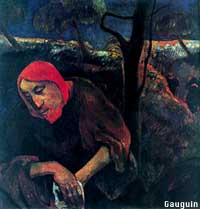
Narrative Description
The Bible has been translated into
hundreds of languages. A new translation and the intellectual significance of
the project is based on the literary considerations of providing a truly authentic
translation of Scriptures, utilizing the know-how of literary styles and poetic
structures of the two languages, the original Aramaic that Jesus spoke and modern
American English.
The value of an idiomatic translation
to scholars and general readers is an obvious one. We Americans know more than any
other nation how foreigners and new immigrants introduce their own idioms in their
efforts to communicate with us, and how sometimes unintended humor is the result.
More significantly, total misunderstandings emerge out of the introduction of incompatible
foreign idioms into English. In addition to this, when it comes to Aramaic, there
are many letters with phonetic sounds that simply do not exist in English. And there
is no really effective way in even approximating the sounds. Literally hundreds of
significant words have been translated in error. In fact, in the case of translating
the Bible, without going into literally pages and pages of examples to prove this
point, allow me to state very simply that there is no other way to translate the
Bible from the original Aramaic unless the translator knows the languages involved
fluently.
As for idiomatic speech, the translator
should have a strong feel for the tone, texture and mood of the words, phrases, idioms,
expressions and figures of speech. Aramaic comes down from the earliest of times;
the first writings were in pictographic form, then cuneiform and alphabetic, through
to the first literature, and the recording of myths and legends of Mesopotamia. It
is a very rich language, with profound twists and turns of expression, richly poetic,
complex, exacting and flexible all at once. It is paradoxical, ironic and full of
hyperbole, and yet ideal for presenting profound ideas.
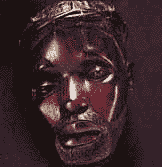
The churches in modern times have
simply failed to provide a proper translation of the Scripture from the original
language of Jesus Christ. I can sympathize to a certain extent with the churches.
Why stir up the issue of an authentic Aramaic language translation when the language
itself has faded away from the expertise of so many church leaders?
There is no doubt about the significance
of the material itself from an American cultural perspective, the US being predominantly
a Judeo-Christian culture. However, the Christian theological establishment has decreed
that Greek is the "original" language of the NEW TESTAMENT, despite the
existence of voluminous proof that the Gospels were written in Aramaic, the language
Jesus spoke and the language of the Biblical lands at the time. My preliminary consideration
of this project presents the obvious fact that of the thousands of poetic verses
in the Bible, none rhyme in Greek or any other language and yet all rhyme in Aramaic.
Surely to consider this coincidence is preposterous.
The project's potential contribution
to scholarship in the humanities is in providing a clear translation of the message
of Jesus, the greatest teacher who ever lived. By translating the dynamics of the
language through its idioms, and retaining the poetic impact of its verses, without
consideration for the differing interpretations of various theological schools, religious
institutions or churches, the wisdom and elegance of the words of Jesus Christ will
emerge more clearly.
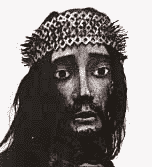
The project's relationship to
larger themes or issues in the humanities is the renewed historical perspective
this translation offers, an airing of the prejudicial considerations of the so-called
"Gentile" converts and the resulting jealousy and prejudice directed at
the original Jewish Christians and their customs. Subsequently much of the alienation
of the Jews in Europe owes to the continued emphasis on and the tangential interpretation
of the Scriptures as God's gift to the "Gentiles," a totally erroneous
concept if there ever was one. One need not go into all the ramifications of the
constant repression against the Jews throughout history, based on strictly non-Scriptural
misinterpretations of the European establishment, in order to see the humanitarian
need for a non-prejudicial and therefore, by definition, authentic translation
of the holy Scriptures. There is clear and systematic mistranslating that
can be footnoted or presented in the final compilation of translator notes that will
demonstrate the deliberate attempt committed by translators, that ended up destroying
a significant bond that would have existed between the Jews and Christians from the
very beginning, even if there was no meeting of the minds on theological matters
to the very end.

The appropriateness of the research
methods, critical apparatus, editorial policies, or translation approaches is
evident in the translator's command of both languages. The critical apparatus applies
to presenting comprehensive footnotes, encompassing transliterations of words that
have no equivalents in phonetic pronunciation or meaning between the two languages,
through a competent idiomatic translation. The editorial policies requiring extensive
footnotes to define and clarify the literal and idiomatic wordings will be implemented
throughout. And, lastly, the translation approach to the text of the Scripture is
maintained at all times free of all prejudice, yet remaining incisive as to scholarly
discernment and scrutiny in preserving its authenticity.
The appropriateness of selection
criteria, the choice of texts for the translation will cover all mainstream and
esoteric translations combined. This is important since it is mostly through the
deliberate variations of interpretive translation that the critically important
passages of Scriptures have become distorted and sometimes falsified, as in the case
of the failure of certain denominations of recognizing the Triune essence of God,
or the Trinity. It is furthermore important to compare all translations, because
they frequently present all the possibilities of translating certain words. In the
case of errors in translation, the intended meaning of the original idioms are easier
to spot, since it is with such idiomatically critical passages that the biggest errors
have occurred, and then in such cases the footnotes will expose the entire nature
of the problem.

The most accurate original texts
are of course the Galilean Aramaic that Jesus, the disciples and apostles spoke and
wrote in. These are the primary texts. They are preserved only by the ancient Church
of the East theologians. However, all other English translations are important, since
they are the reason why a new, authentic translation is valuable insofar as comparative
studies in the humanities are concerned.
The thoroughness and feasibility
of the work plan can be demonstrated by the fact that I have already successfully
translated the Gospel of John, the Three Letters of John, Revelation and the Gospel
of Luke, which are posted on my page for your review.
The quality of the samples,
and their transliteration will be carefully weighed according to their conformity
and consistency with the authentic elegance of the style of the original Aramaic
Jesus spoke.
And the appropriateness of the
site will take into consideration the use of the best and oldest sources of the
Books of the Bible. The different modern Aramaic versions of the Scriptures will
be compared and carefully studies for intended idiomatic meanings, in the context
of the texts and the cultures that embodied the specific scholarship that produced
the variations of the idioms and styles of the Scripture. Furthermore, in the final
index section, there will be references to the ancient literature and mythology of
Ashur, Babylon, as well as all the other Biblical lands that corroborate and enrich
the meaning and scope of the content and style of the Old Testament.
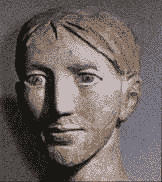
The quality and expertise of
the staff and other contributors here applies to my capacity for undertaking
the translation, transliteration and stylistic considerations of the Scriptures in
both languages, the original Galilean Aramaic and American English. As a translator,
I bring to the job a thorough, native Aramaic language competency, education and
knowledge of the cultures of Biblical lands, together with a US University education
and a degree (BA) in a communications field.
My expertise in translating is
eclectic. I speak Aramaic (native language,) Arabic, Persian and Norwegian. I'm fluent
only in English and Aramaic. I have a profound interest in dialects of various languages.
I understand cultural perspectives through extensive travels and have studied anthropology
at the university through elective courses.
At this time I don't contemplate
using collaborators; however, I may use some editorial help if the need arises. If
I should do this, it will be only on a marginal basis.
The quality and usefulness of
the resulting publication will be significant and extensive, because of the revival
of Christianity in the last decade in America, especially as evidenced through the
numerous religious broadcasts on television and radio. There is a tremendous need
for a translation of the Bible that can withstand the acid test of our times, both
negative and positive. And I intend to deliver it.

The benefit to the audience
is a renewed appreciation for the elegance of the texts of the Scripture, an
enjoyment of the poetic impact of the verses, a fuller and more idiomatic understanding
of the Bible. American readers can finally have an authentic translation, no matter
what faith or background they come from.
The soundness of the dissemination
plans in print are obvious, especially since the US religious institutions and
missionaries are deeply committed to disseminating the Bible throughout the world.
An authentic translation of the Bible will present the American people's intentions
of good will to all nations through the support for an unbiased translation of the
Bible. A Bible translation that does not include deliberate distortions of a racist
and bigoted nature, which were designed over centuries by church hierarchies for
the specific purpose of excluding certain people or religious groups from the power
and financial control of religious institutions.
Furthermore, all people can appreciate
a translation, which is free of errors. And then it can also generate a sense of
unity and reduce friction among all people, because the Bible in its pure form is
the instrument of God's Grace upon mankind.
The dissemination through other
media can follow the same extensive means already in use, such as CD-ROM, computers,
Internet and other traditional broadcast media.
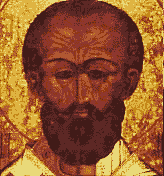
Project Staff
My interest in translating the
Bible from Aramaic started out a long time ago, however I was not aware of the lack
of an authentic translation, until my wife prodded me into studying certain specific
passages and Books she was interested in. Originally, I was interest in the religious
heritage of the Ashurai people. Being a descendant of a very small ethnic minority,
the Ashurai, I began reading the Bible to corroborate some of the historical books
being written about Mesopotamia and the cultures that emerged from that land. I discovered
that the Bible contained certain strange and unintelligible passages. At first I
was not very concerned about these, because like most people I considered the Bible
as a strictly religious book, esoteric in scope and somehow the domain of religious
people, a sort of private phenomenon that need not be the concern of the "man
on the street."
However, a revival of Christianity
and the proliferation of religious programming on television are a growing phenomena
of recent years, and they have begun to show their effects on the secular world of
the average American. Furthermore, religious groups and institutions now are fielding
their own political candidates for office. Although somewhat naiive to think that
religion was not a big influence on American politics before, I see now that religion
has always been a major influence.
Before starting my translation
project, I looked around me and saw, in this town where I live, over fifty churches.
Only fifty thousand people live here. A dozen religious broadcasts a week, that I
am aware of, reach us here. There are hints from every one of them that they
have the "True Gospel." There was such a tremendous inclination to dust
off the old family Aramaic language Bible and find out a thing or two. However, it
was finally my wife who urged me to translate. Her study and devotion to the Words
of Jesus Christ compelled me to undertake the work.

After I studied the Bible and compared
texts between different versions, it suddenly dawned on me that there really was
no competent translation! I searched some more. As unbelievable as it seemed, it
was true. Then I thought, surely, who am I, a layman, to even think of translating
the Bible? Did I truly have the competence to do justice to the job? I looked around
me and talked to many experts, scholars and clergy alike, and I came to the conclusion,
amazingly, that I was probably one of the rarest of translators who had the most
extensive and powerful understanding of both the languages of the Scriptures and
modern American English.
Yes, I do understand Aramaic to
a profound level. I went to an Aramaic language school. It was a Presbyterian Church
school. Our two teachers were both from Urmia, Iran, where the Aramaic language scholarship
was the dominant force in Ashurai cultural life and where most of our best literary
people came from. I studied religion and language from the first grade, in the language
Jesus spoke! I continued my education at an American Jesuit high school, from the
time I was twelve, entering the seventh grade. I studied religion with Father Merrick.
I got an "A" in the course based on my presenting a final assignment on
the "Proof of the Existence of God." I studied Latin at Regiopolis College
in Kingston, Ontario, during my eleventh grade. Later, I completed my high school
in San Francisco in 1962. I entered college and finally graduated in 1970, from the
San Francisco State University, with a BA in Filmmaking.
Aside from my interest in world
literature, I have studied American literature extensively. From the early sixties,
as an eighteen-year-old, I began to write and kept a journal. In 1967, I began my
first novel. I have taken many writing and literature courses. I have recently published
a book on my knowledge and experiences in the film industry. I have made documentaries
about Mesopotamian artifacts in the museums in London and Paris, the British Museum
and the Louvre respectively. My knowledge and expertise in American English is extensive.
I bring a great deal more to the job as a translator, but this for now is sufficient
with respect to an overview of my competence in the two languages.

Project Methodology
The original texts of the
Bible are strangely enough available in print. The Christian world does not know
that they are the originals, because almost no one can read and understand them,
or even discern their authenticity, since the original language is dormant. Therefore,
I am not affected by the controversy as to which is the oldest found version of the
Bible at all. As I am dealing with the original Aramaic idioms, transliterating the
verses and maintaining true idiomatic readings, as well as Aramaic poetic construction,
my main concern is recovering the original meanings of the passages, especially the
words that Jesus spoke. Authoritative texts are freely available and shall
be used for comparison, such as the 1611 King James version, the Standard American
Bible, the Concordance, the New American Version Bible (the St.
Joseph Edition,)
the New International Version and so on, including the Greek and Latin versions as
well.
My interest is primarily in translating
the Aramaic into American English, since Jesus' words are the most important from
the perspective of what Christianity and the Christian Bible are all about.
Dealing with errors is a
very sensitive issue when it comes to the Bible. I intend to provide extensive and
ample footnotes whenever my translation corrects an outright error; however, if the
passage or word in question is acceptable but poorly translated, then I will merely
give a better idiomatic translation. However, I will use extensive notes on the translation
in the forward to the Bible.
There are no serious problems
posed by the translation, except for the fact that some of the concepts that
have been embraced by certain denominations have created major obstacles to a clear
understanding of the Bible. Only careful, comparative study of my translation against
all other translations, including the Greek "Original", can lead to a clear
understanding of the true words of Jesus Christ and the holy Bible.

The introduction and annotations
to the translation will deal with the main reasons why a new translation is essential,
namely that Jesus Christ spoke Aramaic and that the idioms and the poetic elegance
of his words have never been properly translated before.
There will be ample annotations to identify various passages in Aramaic,
both in literal and idiomatic translations, and I will clarify all relevant details
and differences between my translation and other translations.
 The purpose of this project is
to translate the Bible from the original Aramaic, the language Jesus spoke. In its
present translations the Bible contains thousands of verses which do not rhyme or
maintain any appreciable poetic structure, whereas the original Aramaic version is
a masterfully written and poetically beautiful work. Besides considerations of style,
there are extensive passages in the present English language versions that are translated
so poorly from an idiomatic standpoint that the scholar, let alone the layman can
hardly understand them. And there are two larger issues in the humanities, which
will benefit by a non-denominational, authentic translation of the Bible according
to standards of literary excellence.
The purpose of this project is
to translate the Bible from the original Aramaic, the language Jesus spoke. In its
present translations the Bible contains thousands of verses which do not rhyme or
maintain any appreciable poetic structure, whereas the original Aramaic version is
a masterfully written and poetically beautiful work. Besides considerations of style,
there are extensive passages in the present English language versions that are translated
so poorly from an idiomatic standpoint that the scholar, let alone the layman can
hardly understand them. And there are two larger issues in the humanities, which
will benefit by a non-denominational, authentic translation of the Bible according
to standards of literary excellence.![[Aramaic New Testament paperback cover]](aramaic_new_testament_cover.jpg)










